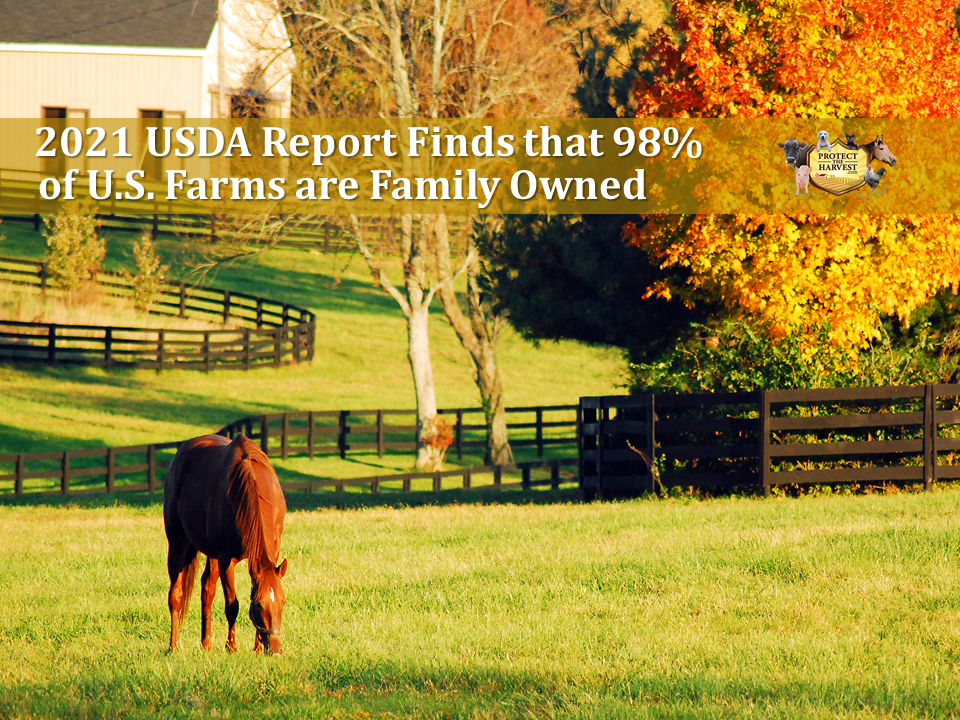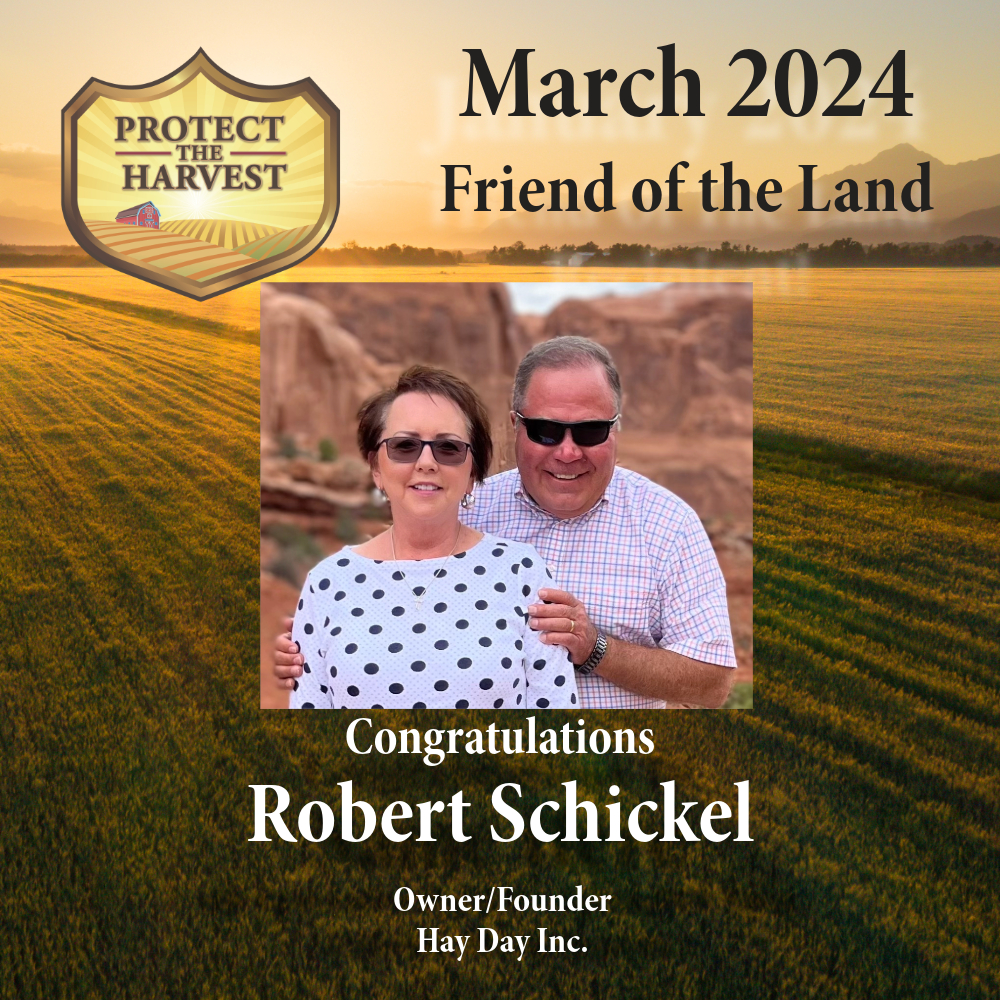
In the 2021 edition of the USDA report, much of the numbers were compared with the 2011 report, which was the earliest year using the same typology. While many things have remained constant, the comparison tells a different story.
The information for these statistics are compiled from the Agricultural Resource Management Survey using a sample of approximately 11,841 farms.
In 2020, family farms accounted for 98% of total farms and 87% of total production. 89% of those farms were small family farms which, compared to 2011, showed a drop in the share of land operated by small family farms from 52% in 2011, to 48% in 2020. Likewise, the share of the value of production on small family farms declined from 26% to 20%.
However, large-scale family farms accounted for 46% of the total value of production in 2020, an increase from 35% in 2011. Large-scale family farms also accounted for an increased share of total land operated from 16% in 2011 to 24% in 2020.
More facts from the 2021 USDA report:
Commodities
Large-scale family farms produce the majority of some, but not all, commodities.
Majority of the values of cotton (62%), dairy (73%) and high-value crops (57%) was produced on large-scale family farms in 2020. Small family farms produced the majority of hay (59%).
Most poultry production is done under production contracts with a contractor paying a fee to a farmer who raises poultry to maturity. Small family farms produced 49 percent of U.S. poultry and egg output in 2020.
Over one-quarter of beef production occurred on small family farms in 2020, whereas another 57 percent occurred on midsized and large-scale family farms. Small family farms generally have cow/calf operations, while large-scale family farms are more likely to operate feedlots.
Nonfamily farms produced 27 percent of all high-value crops; 57 percent was produced on large-scale family farms in 2020.
Farming is Still Overwhelmingly a Family Business.
Ninety-eight percent of U.S. farms are family farms, and they account for 87 percent of farm production.
Small family farms make up about 90 percent of the farm count and operate almost half of the farmland. The largest share of the value of farm production (46 percent), however, occurs on large-scale family farms. Small family farms account for 49 percent of the value of poultry and eggs and 59 percent of hay production.
The share of farms with a low-risk operating profit margin (OPM) varied by farm size in 2020. Between 57 and 83 percent of small family farms have an OPM in the high-risk zone—depending on the farm type—compared with 26 and 40 percent of midsize and large-scale family farms, respectively. Some small family farms in each type operate at the low-risk zone, as do more than 37 percent of midsize, large, and very large family farms.
The distribution of farm operating expenses varies across commodity specializations. Crop farms allocate a large share of their total expenses to seed and fertilizer, while feed and livestock purchases comprise a large share of total expenses among cattle and livestock operations. How farm specializations allocate their expenses did not change dramatically between 2011 and 2020.
Farm households, in general, are neither low income nor low wealth. In 2020, median farm household income, which includes both farm and off-farm income sources, exceeded that for all U.S. households, but it was lower than the median income of all U.S. households with self-employment income. About 41 percent of farm households had income below that of the median for all U.S. households, and 3 percent had wealth less than the U.S. median in 2020.
Direct Sales
The share of farm operations having reported participating in direct sales fell from 8 percent in 2019 to 7 percent in 2020. However, total direct sales amounted to about $10.7 billion in 2020, which is $2.8 billion, or 35 percent, higher than in 2019. Direct sales to restaurants and grocery stores made up the largest share of direct sales in 2020—42 percent—and witnessed a nearly $500 million increase in sales from 2019. Likely due to institutional shutdowns in response to COVID-19, direct sales to institutions saw an 86-percent decline in sales in 2020. Sales at farmers markets, on-farm stores, u-pick, roadside stands, and the like, as well as through regional distributors or aggregators, saw an increase in 2020 relative to 2019.
Pandemic Effects
Over half of all farm family households had at least one person with an off-farm job. Eleven percent of all farm households reported either a loss of—or furlough from—an off-farm job in 2020, and 4 percent of all farm households received unemployment benefits.
More Conservation Reserve Program (CRP) payments went to different types of farms than other Government payments. CRP payments target environmentally-sensitive cropland, with most payments going to retirement, off-farm occupation, and low-sales farms. In contrast, most commodity-related and working-land payments went to family farms with a gross cash farm income (GCFI) of $350,000 or more.
Most of the pandemic assistance to agriculture was from the Coronavirus Food Assistance Program (CFAP). Farms also received loans from the Small Business Administration through the Paycheck Protection Program (PPP) and the Economic Injury Disaster Loan (EIDL) program. Very large family farms received a greater share of their pandemic assistance from SBA loans, likely because they employed more workers and are also more likely to earn a profit in any given year.
Overall, 14 percent of farms participated in Federal crop insurance in 2020. Indemnities from Federal crop insurance were roughly proportional to acres of harvested cropland. Midsize and large-scale family farms together accounted for 65 percent of all program harvested acres and received 77 percent of indemnities from Federal crop insurance in 2020.
The full report can be seen here: https://www.ers.usda.gov/webdocs/publications/102808/eib-231.pdf?v=342.3



